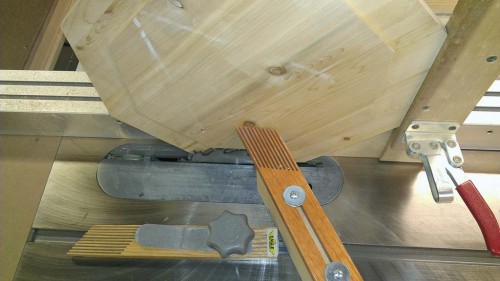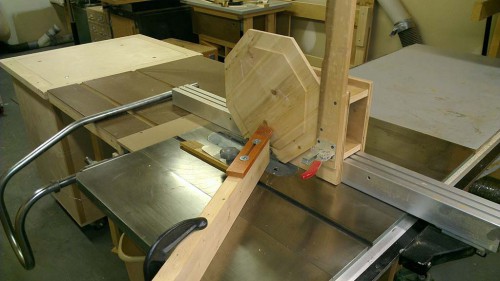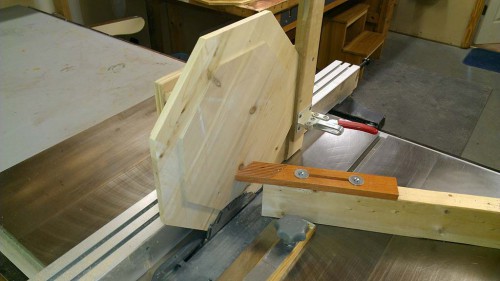What to do when you need to make a custom cut? You make a custom jig. While making some bird houses, I was faced with the challenge of rabbeting a 1-1/2″ wide ledge along the entire perimeter of the octagonal base. At first glance, this seemed like a simple job for the tenoning jig but it quickly became apparent that the pieces to be cut were too wide for the clamping mechanism of the jig. The clamp was able to apply pressure to the back edge of the piece but this tended to push out the front edge. Where the piece really needed to be secured was in the middle as close to the blade as possible.
I suppose I could have rigged up an oversized clamp to take the place of the existing clamp on the tenoning jig but I opted for a simpler approach that only took a few minutes to setup. It basically involved a feather board screwed to a 2×4 that was clamped to the top of the tablesaw.
The feather board was positioned right above the saw blade and adjusted to apply moderate pressure against the piece being cut. To keep the feather board from sliding forward, I placed a second sliding feather board in the tablesaw slot directly in front of the jig and gave the knob a few turns to lock it in place.
The far end of the 2×4 was clamped to the table with a C-clamp. To make the cut, the octagonal piece was placed in the tenoning jig with the back edge butted against the vertical support. With my left hand applying firm pressure on top to hold the piece against the face of the tenoning jig, the jig slides forward to make the cut. With the feather board in place, the bottom half of the piece is held tightly against the tenoning jig during the cut, making for a safe and accurate cut.
An added benefit of this configuration is that the feather board acts somewhat as a blade guard, making it difficult for the hands to slide down into harm’s way.





Clever use of the featherboard. Need to make better use of mine.